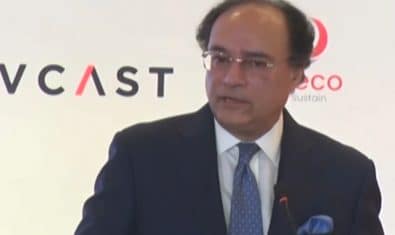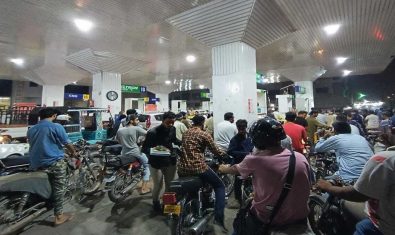The Institute for Energy Economics and Financial Analysis (IEEFA) has raised objections over the 9-year Indicative Generation Capacity Expansion Plan (IGCEP 2021-2030) prepared by the National Transmission and Despatch Company (NTDC).
Last September, IEEFA had also raised concerns over the 27-year IGCEP 2020-2047 also prepared by the NTDC.
ALSO READ
Qatar to Grant Visa-on-Arrival to Pakistani Nationals
In its recent report, IEEFA has stated that the goal listed in the IGCEP 2021-2030 is to improve decision-making under different long-term uncertainties while assuring a robust generation expansion plan with the least cost and minimum risk.
However, IGCEP 2021 is unlikely to achieve this goal. In fact, although there has been some improvement in the plan, there are also a number of significant backward steps since the 2020 version.
The report states on the positive side, the power demand forecasts for all three scenarios in the new IGCEP (low, medium, and high economic growth) have been reduced. The new forecasts look more realistic than the IGCEP 2020 forecasts and are closer to IEEFA’s high-level forecast of power demand at the end of 2030.
It adds that excessive power demand forecasting is often the root of the costly overcapacity that is a growing issue in developing countries around the world including Pakistan.
The reduced demand forecast in IGCEP 2021 is mirrored by reduced power capacity by 2030 in comparison to IGCEP 2020, meaning that some of the overcapacity added into the 2020 version is now avoided. Overall planned 2030 thermal power capacity has been reduced by around 7,000 MWs when compared with the thermal power capacity envisioned in the IGCEP 2020. Almost 3,000 MWs of this is reduced coal-fired power.
ALSO READ
Anti-Corruption Watchdog Clears PTI’s Big Names in Ring Road Scandal
However, although planned LNG-fired power capacity has been reduced, the 6,800 MWs of remaining planned capacity will be completely unused by 2030, highlighting that overcapacity has not been completely eradicated under the IGCEP 2021.
Similarly, the planned wind and solar power capacity in 2030 has been slashed by an astonishing 17,000 MWs under IGCEP 2021. The IGCEP 2020 was in line with Pakistan’s renewable energy target of reaching 30% renewable energy capacity by 2030 but the new IGCEP has abandoned this and now only envisages 12% by 2030.
The report points out that IGCEP 2021 clearly mentions that “renewable energy, including wind and solar, are quickly becoming cheapest forms of new electricity generation across the globe” and the “trend of cost reduction for the renewable technology is set to continue in the future and will inevitably reduce the cost burdens, reliance on increasingly expensive fuels and hence lowering the overall generation cost”.
It adds that by significantly reducing wind and solar capacities – the cheapest sources of new power generation in Pakistan – IGCEP 2021 cannot be considered a least-cost plan as listed in its goal.
Considering Pakistan’s power system circular debt and the pressure from the IMF to address the crisis with a significant hike in power tariff, it would make sense to have more commitment to the cheapest sources of new power generation in Pakistan, not less.
ALSO READ
CAA Plans to Introduce Helicopter Service for Tourists
IGCEP 2021 has Pakistan going in the opposite direction to the rest of the world where solar and wind installations are increasing with each passing day.
Instead, IGCEP 2021 puts increased emphasis on hydropower. It considers hydro to be “renewable” and plans for 61% of generation to come from wind, solar, bagasse and hydro by 2030, in line with the Prime Minister’s statement at the December 2020 Climate Ambition Summit that Pakistan was aiming for 60% power generation from “renewables,” including hydro.
The Alternative and Renewable Energy Policy 2019 (AREP 2019) set a target to reach 20% renewables capacity by 2025 and 30% by 2030. This policy represented a major step forward for Pakistan and included various renewable technologies in the target including wind and solar but not hydro. If hydro is now to be considered “renewable” then the 30% target by 2030 has already been achieved, given the existing hydro capacity in Pakistan and AREP 2019 is made completely redundant.
Given Pakistan’s track record of major hydro project delays, the decision to reduce the outlook of the latest IGCEP to 2030 is highly questionable. The previous IGCEP included a 2030 and a 2047 time horizon but the latter has now been dropped in the latest IGCEP. There is a significant likelihood that proposed hydro projects won’t be finished within this timeframe.
The proposed 4,500 MWs Diamer-Bhasha Dam has an expected commissioning date of February 2029 according to the IGCEP 2021, making it seem at great risk of not being completed within the IGCEP’s timeframe. The huge project, which has been on the drawing board for many years, still faces many challenges and in addition to likely running over schedule, the US$14 billion suggested cost is likely to prove to be a significant under-estimate.
ALSO READ
FBR Starts Inspection of Real Estate Agents and Jewellers
The report notes that in contrast to hydro projects, wind and solar projects have very short construction periods that give more certainty to power development planners.
Much is made of the increased energy security provided by hydropower but increased energy security could have been achieved at a lower cost through more emphasis on wind and solar.
In fact, there remain some questions over dams’ ability to reliably supply power for Pakistan. A recent heatwave of the type likely to occur more often as the climate continues to change has led to blackouts, as the power system was unable to meet increased demand. The fact that the large Tarbela Dam was only operating at 25% of capacity due to water shortages contributed to the power cuts.
Pakistan’s government insists that reliable and affordable power is one of its top priorities. However, the policy change to include hydro within the renewable energy category, combined with a target of 60% clean energy by 2030 that heavily relies on hydro and slashes wind and solar, means that there is significant risk added to the new IGCEP 2021. There is a high likelihood that major hydro projects will be delayed and the 60% target of reaching renewables capacity by 2030 target will be missed.
The positive impact of the declining cost of solar and wind is also largely overlooked in the new plan which is instead exposed to the risk of major cost over-runs for the large dam projects.
ALSO READ
Public Transport to Remain Closed on Eid-ul-Adha
Therefore, the IGCEP 2021 cannot be considered to be a “least cost and minimum risk” plan, the report concludes.


























